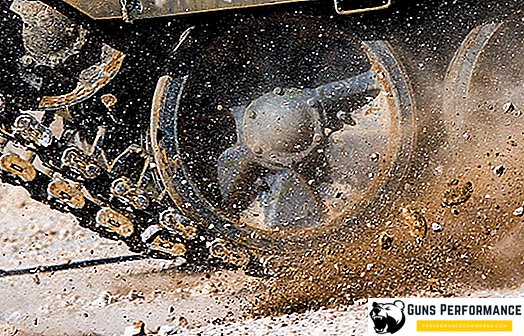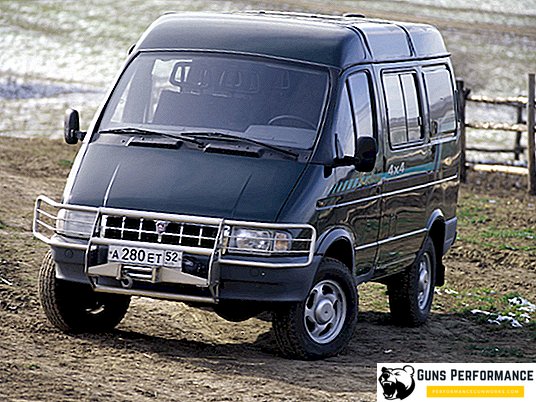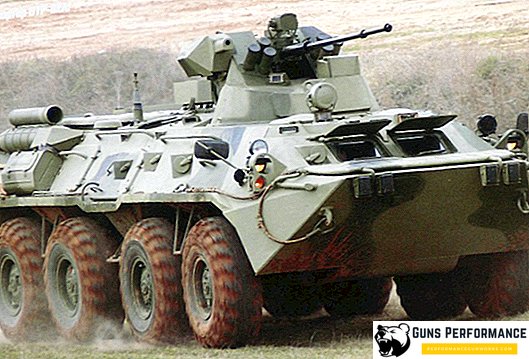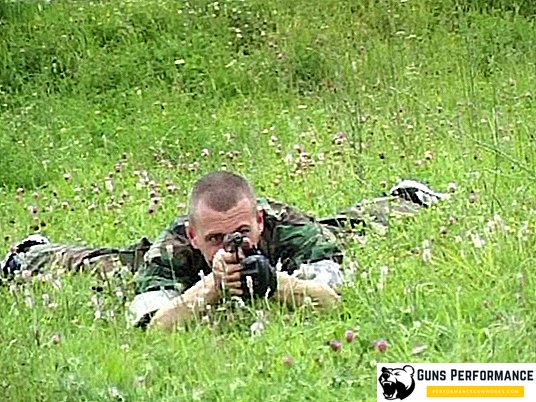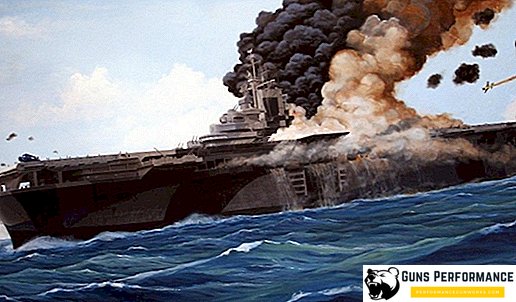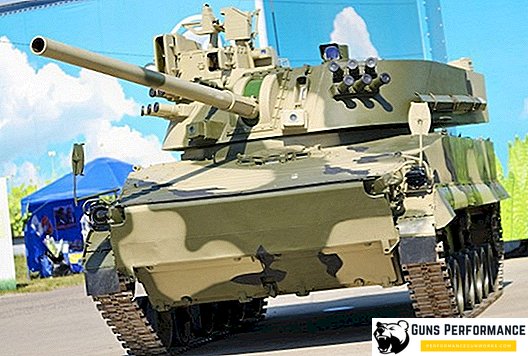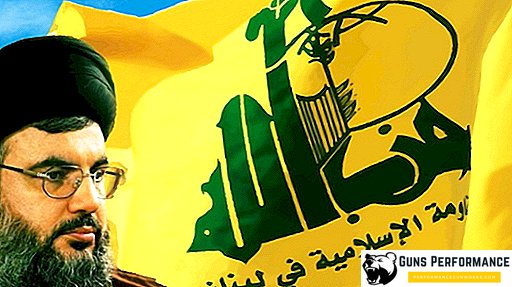
Terrorism is one of the most serious problems facing the world community today. In recent years, the enemy of number 1 of the entire civilized world is the Islamic state - the group that has raised terrorism to a new level of atrocity and savagery. However, there are other extremist organizations with a longer and bloody history.
For the average man in the street, all Islamic terrorists are the same. They wear beards, walk with black banners, constantly pray and shoot Kalashnikovs with shouts of "Allah Akbar". In fact, everything is not so simple. The Middle East is a very difficult region with a large number of peoples and national minorities living there. Islam itself is a very heterogeneous religion - there are a large number of different trends and religious schools. Therefore, it is not surprising that Islamic terrorist organizations are also very different from each other, and some of them are sworn enemies and fiercely fighting each other.
One of the most famous Islamist terrorist organizations is Hezbollah. This is a Shiite pro-Iranian group, the center of which is Lebanon. For many decades, Hezbollah has been fighting to create a clerical Islamic state in Lebanon in the image of Iran. The main enemy of this grouping is Israel, one of the cornerstones of Hezbollah’s ideology (except for religious tenets, of course) is the fight against Zionism. In May 2013, Hezbollah announced its participation in the Syrian Civil War on the side of Bashar al-Assad. Currently, the detachments of this organization are one of the most efficient forces in the Syrian army.
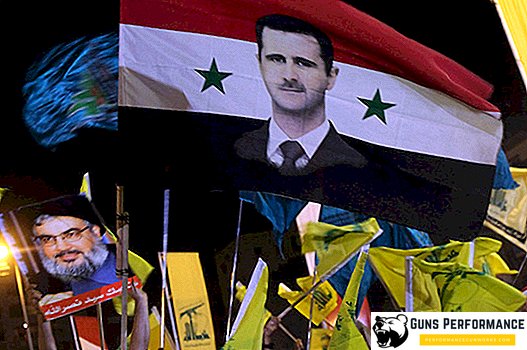
Hezbollah from Arabic translates as "the party of Allah", this name is associated with a quote from the Quran: "After all, the party of Allah - they will win." In 1985, the organization issued a manifesto that clearly defined the goals of the Islamists. Three of them are basic:
- Liberation of Lebanon from any colonial dependence.
- The victory over the Phalangists and revenge for all their crimes.
- Establishment in Lebanon of a regime similar to that which exists in Iran.
The Phalangists are Hezbollah’s main opponents in Lebanon, the party that represents the interests of Lebanese Maronist Christians.
At present, Hezbollah is considered a terrorist organization by the majority of Muslim countries in the region, as well as by the leading Western states: the United States, Canada, and Israel. Partially the same opinion is held in the EU, the UK and Australia.
Russia does not consider the grouping to be a terrorist, although back in 1985, Hezbollah’s fighters stole three Soviet diplomats, later one of them was shot.
The Hezbollah flag is the emblem of the organization of green on a yellow background. It is a stylized name of the group, in which one of the letters holds the machine gun. Also in the emblem there is a book and a globe. Its design is clearly inspired by the emblem of the Iranian IRGC.
Story
The Hezbollah organization appeared in 1982 after the regular Arab-Israeli war and the capture of part of Lebanon by the Israeli army. The result of the hostilities was the expulsion from the Lebanese territory of militants of the Palestine Liberation Organization. In response, Iran created a new Islamic organization, which was to replace the PLO and continue the fight against the Israelis. The new grouping was called Hezbollah. The direct assistance to its creation was provided by the Corps of Guards of the Islamic Revolution.
The bloody conflict in Lebanon, which was accompanied by massacres and sweeps of civilians, caused a surge of anti-Israel sentiment throughout the world, they were especially strong in the Arab world. Therefore, it was easy to find people for the new structure against Israel.
The initial purpose of the organization was the complete liberation of the territories of Lebanon from Israeli occupation. The future tasks were much more significant: the complete destruction of Israel, the establishment of Muslim control over Jerusalem and the formation of a state in Lebanon in the image of Iran. Also, the leaders of the organization declared jihad to imperialism and Zionism. Iran sent several thousand fighters from the elite Guard Corps of the Islamic Revolution to help Hezbollah fighters, in addition, it provided serious financial assistance to the group and sent weapons.
Throughout the 1980s and 1990s, Hezbollah’s military units fought a partisan war against the Israeli army that occupied the southern part of Lebanon. In the end, this struggle was crowned with success - in 2000, Israel left Lebanon.
In accordance with the agreements, the pro-Western Lebanese army was to occupy the liberated territories, but this did not happen: Hezbollah fighters arrived in southern Lebanon, which borders Israel. In this area, a powerful network of defensive fortifications was built, from where terrorists periodically fired on Israeli territory.

The militants, as a rule, used fortifications built by the Israeli army. From this bridgehead, terrorists could bombard almost the entire northern part of Israel, which they regularly used. In 2006, one of the leaders of the movement, Hassan Nasrallah, stated that his organization could, using missile weapons, fire at all Israeli cities, military bases, industrial enterprises and ports located in the area. He also said that Hezbollah has more than 12,000 missiles.
Hezbollah waged its struggle not only by force of arms or through terrorist acts, as early as 1992, the organization took part in parliamentary elections and received 12 mandates.
In the 2005 parliamentary elections, Hezbollah took on 23 mandates and received one ministerial portfolio.
On July 12, 2006, the militants launched a massive rocket and mortar attack on the fortified Nurit point and attacked a border patrol, killing three and capturing two servicemen. After that, Israel began a ground operation, during which a large area of southern Lebanon was cleaned. The fighting continued from July 12 to August 14, 2006, throughout this period, Israeli aviation attacked all of Lebanon, and the terrorists fired at Israel at regular intervals, using mostly rocket weapons. The Israeli military operation has received the name "Worthy punishment".
In the parliamentary elections of 2009, Hezbollah (or rather, the coalition, which she heads) has already won 57 out of 128 seats.
Since 2011, after the start of the “Arab Spring” in Syria, the Hezbollah units have been involved in this civil conflict on the side of the government forces. The fighters of the group took part in almost all the major battles of this war.
Initially, Hezbollah was a purely military organization whose main task was the struggle against Israel with arms in hand. Moreover, in the first years after its creation, this grouping was, rather, a representation of Iran in Lebanon. However, after the decision to participate in the elections, Hezbollah began to rapidly “lebanize”, which some of its members did not like too much.
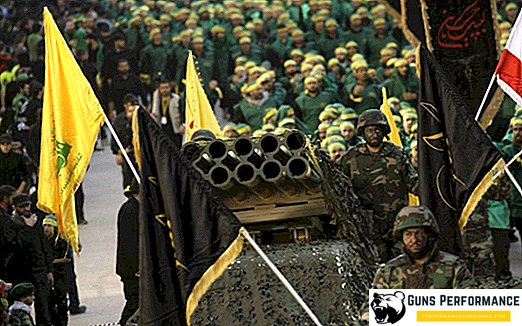
Currently, the group’s activities can be divided into two areas: in the south it continues to fight the Israeli army, but, in addition, Hezbollah is actively engaged in political work in the rest of Lebanon’s territory. And I must say that she does it very successfully. In Lebanon, Hezbollah has long been turned into a kind of parallel power system, quite efficient and secure (thanks to Iran). The group is gaining more and more political weight and is increasing its popularity, and not only among Shiites. This tactic is very similar to the actions of the Irish Republican Army, which combined both armed struggle and political methods.
In just the past few years, Hezbollah has spent several billion dollars in social needs in Lebanon for social needs. The organization builds kindergartens and schools, hospitals and clinics, and even supermarkets. Many services are provided to militants and their families with substantial discounts. Education in schools built by Hezbollah is cheaper than in state schools. Low-income scholarships are available. Naturally, when teaching, special attention is paid to the Arabic language, Islam and Shiite traditions. However, both English and exact sciences are studied. The overall level of teaching is very high.

Organization structure
Initially, Hezbollah did not have a clear organizational structure, but at present the group has a strict hierarchy based on strict submission to religious leaders.
The supreme leadership of the organization is the Supreme Consultative Council, consisting of twelve members. These are religious, political and military leaders of the group. Hezbollah’s current leader is Sheikh Saeed Hasan Nasrallah. Also in the leadership is his deputy, the spiritual leader, who is also the highest judge, some members of the Lebanese parliament, the commander of the fighting units in southern Lebanon and the leaders of the organization in certain territories.
It is clear that the head of a terrorist organization is a very dangerous occupation. The first leader of Hezbollah, Hussein Fadlallah, retired after a failed assassination attempt, his successor Abbas Moussawi was killed in 1992. Hezbollah’s current deputy chief was killed in 2004.
It is difficult to name the exact number of Hezbollah, various figures are voiced. In 2004, the Israelis talked about 4 thousand soldiers, who made up six battalions and another 5 thousand reservists. According to other data, their number is much smaller and amounts to about 1 thousand militants and 6-7 thousand reserves.
There is information that there is a special group of suicide bombers in Hezbollah, consisting of fifty people. There is also a special unit for penetration into the territory of Israel. His fighters are fluent in Hebrew, using Israeli weapons and an IDF uniform.
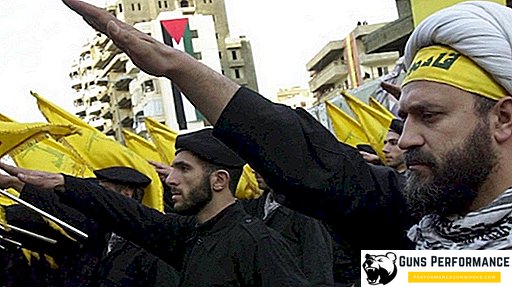
Hezbollah attacks
On Hezbollah’s account, there are a lot of loud and bloody terrorist attacks, some of which were carried out against citizens of Western countries.
On April 18, 1983, terrorists of the group blew up a van filled with explosives near the US Embassy in Lebanon. 63 people were killed (13 Americans), more than 120 were injured.
On October 23, 1983, a suicide bomber blew up a mined truck near the barracks with American and French soldiers. As a result of the attack killed more than 230 US troops and 58 French.
On November 4, 1983, the headquarters of the Israeli army in Tire was shelled. The victims - 21 people, 10 injured.
August 12, 1984 The explosion of the American military base in Spain. 18 servicemen killed, more than 80 injured.
September 20, 1984. The explosion at the American Embassy in Beirut. 23 people killed, 21 - injured, including the US and British ambassador.
Terrorists repeatedly seized civilian airplanes with passengers, demanding that their companions be released from prisons.
In 1985, Hezbollah militants seized two vehicles with employees of the Soviet consulate and KGB officers. One of the Soviet diplomats was later executed by terrorists.
Hezbollah militants were also involved in a large number of kidnappings (mostly citizens of Western countries) in Lebanon.
One of the most high-profile and audacious crimes of the organization was the assassination of Lebanese Prime Minister Rafik Hariri, committed in 2005. His car was blown up. As the organizers of the attack, the investigation named two members of the group’s leadership.
This is not a complete list of terrorist acts prepared and committed by Hezbollah. Attacks on Israeli military and industrial facilities generally number in the hundreds. The group planned and committed terrorist attacks not only in Lebanon or Israel. Similar actions were held in Azerbaijan, Switzerland, Thailand, Argentina.
Weapons
Hezbollah is not out of money, so it has a rather impressive arsenal. First of all, there are thousands of launchers and up to one hundred thousand missiles for them. Moreover, modern missiles that are used by Hezbollah are much more perfect than the former Katyushas. Terrorists have cannon artillery and mortars, anti-tank systems of Soviet, Russian and Iranian production. After Hezbollah’s entry into the Syrian conflict, its access to the newest weapons has increased significantly.
Israeli sources are talking about the supply of Russian anti-aircraft complexes S-300 through Iran, and photos of Hezbollah militants operating the latest Russian T-90 tank have appeared on the Internet. There is information about the deliveries of the Pantsir-S1 anti-aircraft complexes, the Yakhont anti-ship missiles and even the Tochka-U armored missile system to militants




